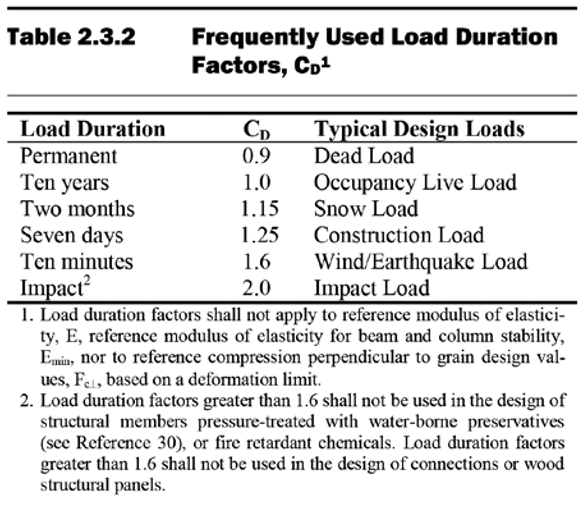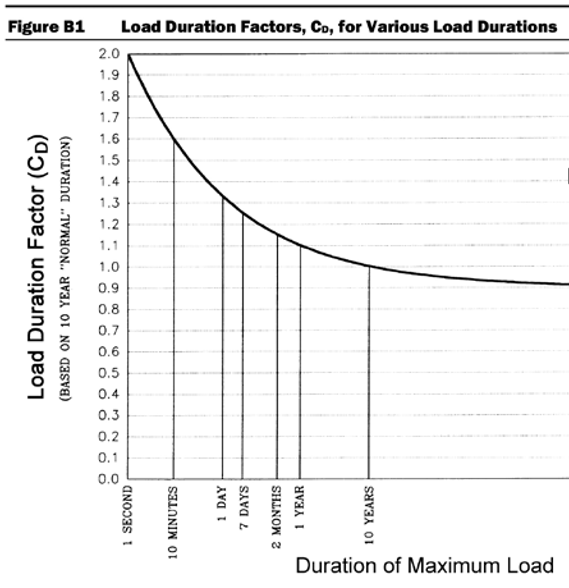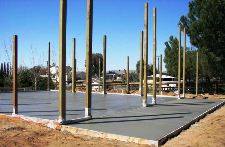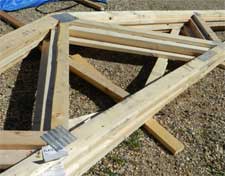Load Duration Factor in Wood Design
Considering a barndominium, shouse or other post frame (pole) building with wood framing? While this article is somewhat technical, you (as a future building owner) can use it to determine if who (builder or supplier) really knows what they are talking about when it comes to structural design.
And if they cannot answer this one simple question, do you REALLY trust them with your new building?
Here it is:
“Please explain to me Load Duration Factor for Wood Design”.
Please read on.
Lumber has a unique structural characteristic: its ability to handle higher stresses under shorter periods of time. This characteristic is accounted for during design through what is known as a Load Duration Factor (LDF). Given this is a property unique to wood, it is worthwhile for building designers, in a heavily wood-based industry, to fully understand what this factor is and how it can affect their designs. LDF is not applicable to non-wood structural systems.
Think about loads typically seen in a building. Dead loads are material weights making up a building from the day of construction until it is taken down. Actual dead load and design dead load can be (and often are) different, with design dead load being greater than actual dead load. Building designs can always be performed using actual dead loads when those are well known.
Live loads affect a building less but a portion are still applied through a building’s useful life. Roof live load rarely occurs and when it does, it’s for a very short amount of time. Typical roof live load (not snow, also considered a live load) is walking on roof during repairs, or having a tree fall on your roof. Each of these events are rightly considered short-term loading conditions.

All of this relates to load duration, accumulated amount of time during a building’s life they will be applied. All of these loads are relative to “normal” loading, defined as a “10-year load duration.”
For reference, live loads are considered normal loads. 2018 NDS (National Design Specification for Wood Construction) Table 2.3.2 shows load duration factors for different durations. This LDF concept is based on engineering mechanics concept of elasticity. Elasticity means when a load is applied to wood it deforms, and when this load is taken off wood it springs back to its original position. Long ago, testing was done at Forest Products Laboratory to give wood a special feature called LDF to account for two things: wood is very elastic; and as more load is applied to wood, more creep deformation occurs over time.
A good example is bending a yardstick. It can be bent frequently and come back to its original position. However, if you put a weight on a yardstick between two chairs causing it to bend six inches and leave it in this position for six months, what will it look like?
LDF is a part of Allowable Stress Design (ASD), the analysis method used in wood design for nearly 80 years.

Load Duration Factor Curve shown is taken from NDS Appendix B where more information on LDF can be found.
LDF factor is applied like other loading factors, as NDS design value specified is multiplied by LDF to determine allowable stress. This factor is applicable to bending, tension, shear, and compression parallel to grain reference design values found in NDS Supplement 4.
What happens if there are multiple load durations within a load case, for example, Dead + Live? Dead load has a load duration factor of 0.9, while normal duration live load (e.g., furniture, beds, people in a room, etc.) has an LDF factor of 1.0. Per NDS this is how LDF is applied:

Hopefully you, like me, want your beautiful new building to structurally withstand what nature throws at it.









Understanding the load duration factor is crucial in wood design. This topic likely delves into the technical aspects, emphasizing the importance of load considerations in structural integrity.